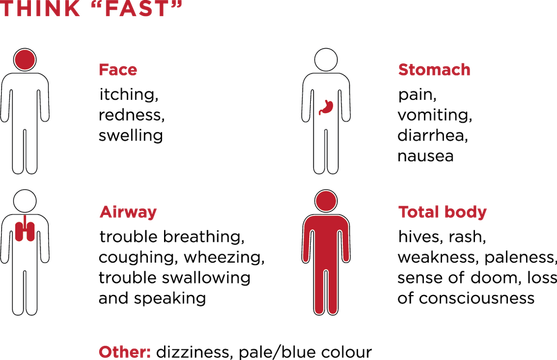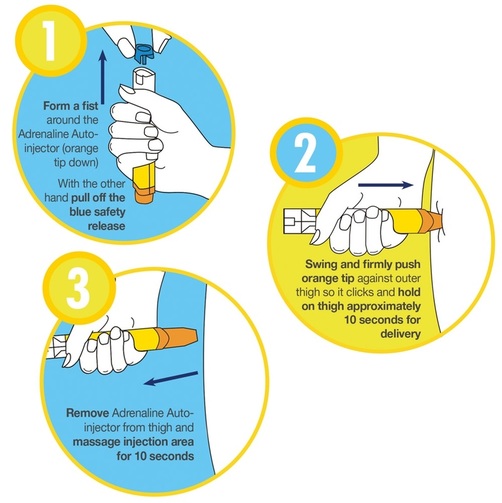|
Anaphylaxis is an immediately life-threatening allergic reaction. If left untreated, there is a real risk for death. In this first ever Patient and Provider podcast and blog post we talk about what happens during anaphylaxis and how to receive the proper care to stay alive and get treated safely.
It is worth reminding again that with any of these educational pieces, there are limits to these posts and should not be the only source of education on any topic, especially for one like this involving a life-threatening illness.
As the "Think Fast" graphic from this site above demonstrates, there are many symptoms to watch for to help diagnose anaphylaxis. Think about anaphylaxis as an allergic reaction that involves multiple areas of the body. As a broad and generalized point, think that two or more of the above areas as possibly anaphyalxis. If experiencing these, immediate evaluation is important.
If there is concern for anaphylaxis, rapid assessment is important. In the United States, calling 911 is an important first step. This allows for EMS (emergency medical services) via a local ambulance and/or fire service to come to help. If there is suspicion for anaphylaxis, a commonly given medication is epinephrine. This medication is usually given in the muscle but sometimes through an IV.
Should this first step may not be possible, going to the emergency department (aka ER or ED) directly is also important. EMS will take someone there for assessment, as well. If epinephrine has not already been given or is not fully successful, additional epinephrine may be given at this time. There are also other medications that may be attempted some of which include steroids, nebulizers, glucagon, and antihistamines. Frequently, may of these medications are given whether it is an adult or a child who needs to be treated for anaphylaxis. It used to be common after treatment to keep someone for hours or even days to watch for a second reaction. With new research, this is becoming less common. It is also common to receive a prescription for an auto-injector such as an EpiPen (the most common). Keep in mind there have been some cost issues as of late regarding EpiPens specifically which has led to a lot of controversy. Either way, as a patient asking for a prescription if treated for anaphylaxis is very reasonable. It is important to learn about how to use it properly. An example is shown above with the graphic borrowed from this site. If you are interested in more information about anaphylaxis, consider seeing the podcast post under the Emergency Professionals side of the website. This is also the same area to find the sources that were used to cover the information provided. Remember to look us up on Libsyn, share on Facebook, retweet on Twitter, and rate on iTunes to help spread the word on TOTAL EM. If you have any questions you can comment below, email at [email protected], or send a message from the page. We hope to talk to everyone again soon. Until then, continue to provide total care everywhere.
0 Comments
Leave a Reply. |
Future UpdatesThe current main focus is on further developing the Emergency Professionals side but keep checking as more updates are coming very soon! Archives
November 2017
Categories |
||||||


 RSS Feed
RSS Feed